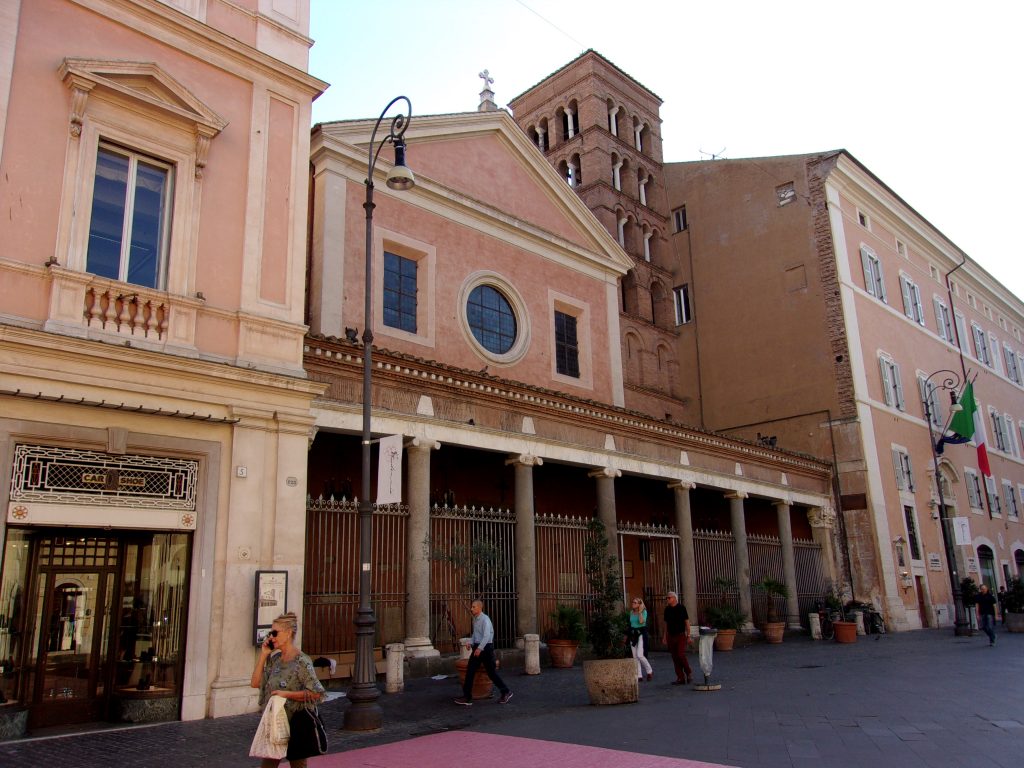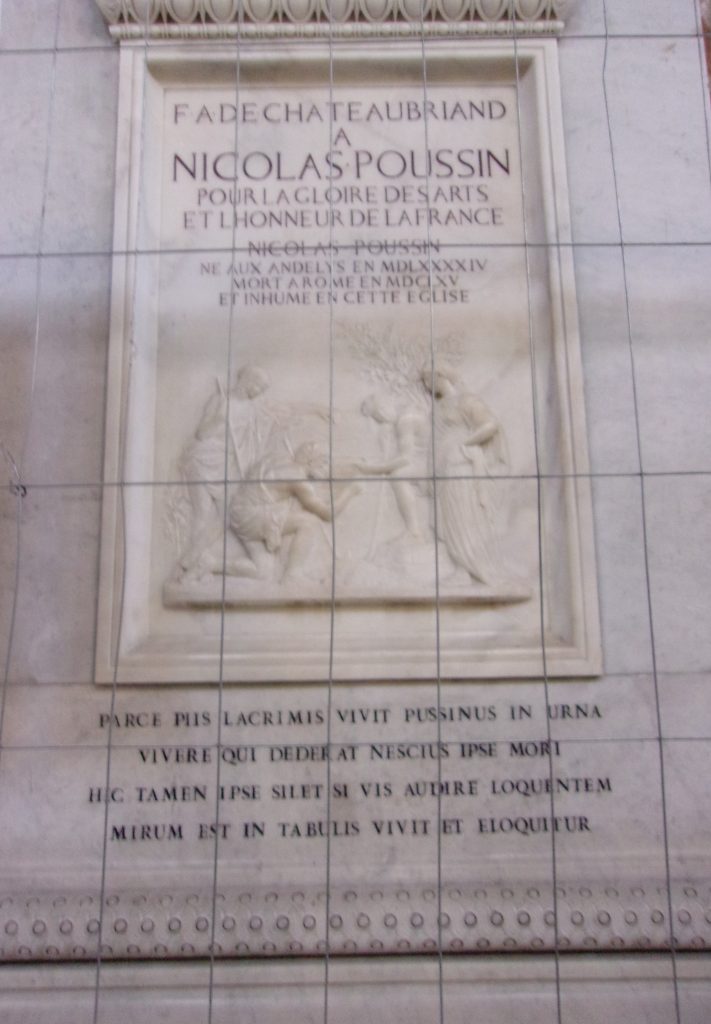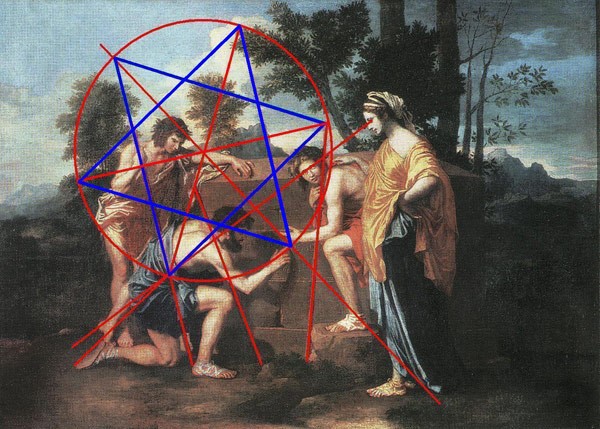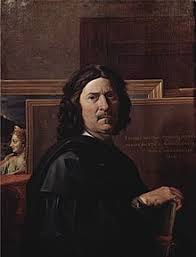Watch on Video (or read transcription below)
.

Nicolas Poussin (1594- 1665) is widely known, not only for his masterful paintings, but also for his name being associated with one of the great unsolved mysteries of our time; The mystery of Rennes le Chateau and the hidden meaning to the phrase Et in Arcadia Ego.
In chapter 61 of The Da Vinci Code by Dan Brown, which incorporated many connective pieces to the mystery of Rennes le Chateau, Poussin’s name is mentioned. Although the book is a work of fiction it is based around certain facts. It is these intriguing truths which helped propel Dan Brown’s book into a worldwide best seller.
Brown’s thriller most likely included Poussin into his storyline because his work, especially The Arcadian Shepherds, was known to hold mysterious elements. These puzzling details have not been proven in relation to Brown’s storyline, but throwing Poussin’s name into his book certainly offered some additional spice, and added to Poussin’s popularity.
However, the biggest surge in popularity for Poussin came in 1982 when the book, The Holy Blood and The Holy Grail by Baigent, Leigh, and Lincoln was published. It revealed much of the now known mystery surrounding Poussin, and related how he was believed to be in possession of a Key to a powerful secret. It is thought this Key is hidden within his artworks, specifically his work of ‘The Arcadian Shepherds’, which happens to decorate his tomb in the Basilica San Lorenzo in Lucina, Rome.

While visiting Rome in October of 2018, my husband and I had the opportunity to explore this church and the Tomb of Nicolas Poussin. Renovations were being done inside this incredible old structure, but Poussin’s tomb and the mysterious inscriptions could still readily be seen amongst gates and drapes.

It was interesting to take note of the bottom inscription on his Tomb. It seemed to indicate his works could indeed hold something secret.

It says: (in Latin)
Parce Piis Lacrimis ViVit pussinus in urna vivere qui dederat nescius ipse mori hic tamen ipse silet si vis audire loquentem mirum est in tabulis vivit et eloquitur
Which roughly relates:
Spare pious tears, Poussin lives in this urn. He who gave him life himself knows not death. In this place Poussin is silent, but if thou wouldst hear him speak, well mayst thou be surprised, he lives and speaks in his paintings.
As seen, it is a depiction of The Arcadian Shepherds which is found right above this inscription. What would we be surprised to hear? What secret might be suggested Poussin tells?

Poussin’s painting of The Arcadian Shepherds consists of three shepherds and a shepherdess, deeply immersed, and hovering over a tomb with the puzzling phrase ‘Et in Arcadia Ego’ engraved upon it. The background of the image is a mountainous landscape which some feel matches the area near Rennes le Chateau. Surprisingly, a solitary tomb, extremely similar to the one portrayed in Poussin’s painting, can be found within this matching physical landscape. Theories abound for why Poussin might have included this tomb, but none have been confirmed. They range from geometric clues leading to a hidden treasure to spiritual awakening.

The assertion Poussin holds a Key to a secret originates from a few different sources. One of which is through a letter. In 1656, Abbe Louis Fouquet visited Poussin in Rome. He sent a letter to his brother, Nicolas Fouquet, who was part of the royal court of Louis XIV. The letter stated:
“He (Poussin) and I discussed certain things, which I shall with ease be able to explain to you in detail, things which will give you, through Monsieur Poussin, advantages which even kings would have great pains to draw from him, and which, according to him, it is possible that nobody else will ever discover in the centuries to come. And what is more, these are things so difficult to discover that nothing now on earth can prove of better fortune nor be their equal”
Interestingly, Nicolas Fouquet later became extremely wealthy. So much so, his riches were questioned, he was arrested, and kept in confinement by the King. And suspiciously, it has been documented that King Louis XIV secured a painting of The Shepherds of Arcadia by Poussin but kept it hidden from the public eye. Is there a connection to the mass of wealth by Fouquet, the King’s acquisition, and the letter stating ‘Poussin held advantages to a fortune’?
What valuable secret might the painting hold?
Later in the mid 1900’s, a baffling message, stating Poussin specifically held a Key, was decoded from parchments supposedly found by Berenger Sauinere, a Priest of Rennes le Chateau in the late 1800’s. While these parchments are considered forgeries today, it is strongly questioned if the secret messages they held might be authentic, and the Priory of Sion, the secret society who produced the parchments, did so in effort to release the messages in a more dramatic fashion.
The decoded messages are:
From the Small Parchment:
To Dagobert II, King, and to Sion is this treasure and he is there dead
From the Grand Parchment:
SHEPHERDESS NO TEMPATATION THAT POUSSIN TENIERS HOLD THE KEY PEACE 681 BY THE CROSS AND THIS HORSE OF GOD I COMPLETE THIS GUARDIAN AT MIDDAY BLUE APPLES

The meanings to these messages remain a mystery.
Poussin was highly regarded and a learned master. He was both a philosopher and painter, and it is not unimaginable at all that he could have hidden secrets in his paintings. What they are, however, continues to be studied. But it does seem that his tomb does hint to the fact that he did indeed reveal certain secrets in his paintings. Will we ever hear what they say?
.
Best of luck with all that you seek! Always Treasure the Adventure!
.

I think this might be my favorite article that you’ve ever posted. I love the idea of a real live treasure hunt having the answers you seek be hidden literally in front of your face. No wonder Dan Brown used Poussin’s work, in that novel. If these images are believed to hide real life treasures just beyond the tip of your nose, its a tale just fit for a book and or the screen.
A famous dictum of Nicolas Poussin was ‘Je n’ai rien negligé’ – ‘I have neglected nothing’. These are said to have been his last words.
The similarity between this motto and ff’s statement – ” I tried to think of everything” – is striking.
Thank you for the article and photographs. When next in Rome will put Poussin’s tomb on my agenda.